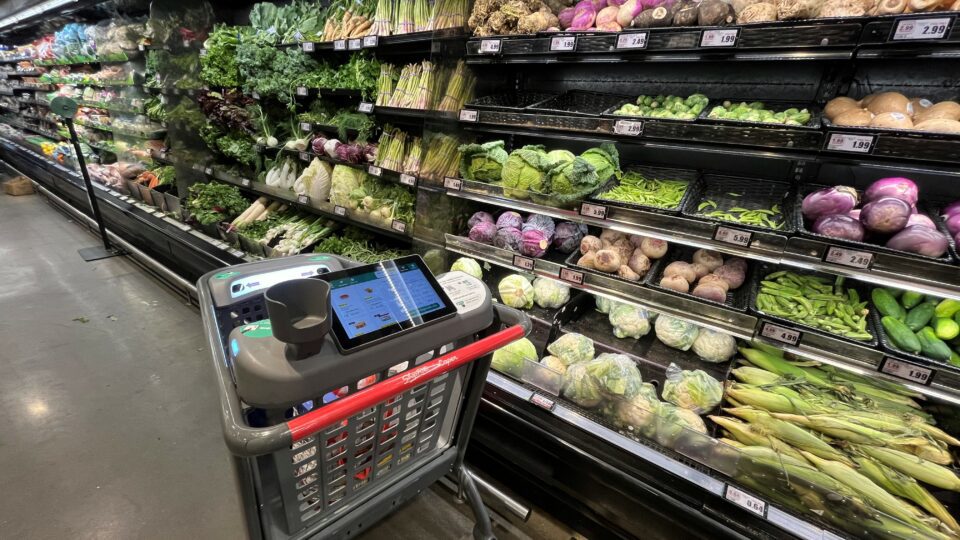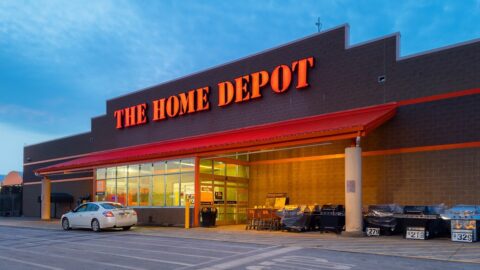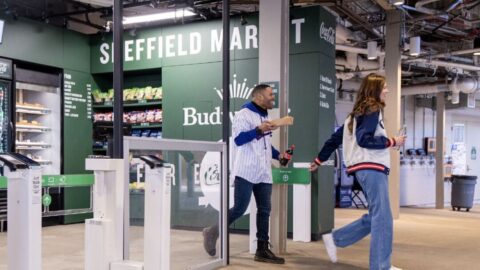The Editors’ Perspectives column offers insights and opinions from the Retail TouchPoints editorial team as they dig into the latest trends in retail, marketing and tech.
This month Retail TouchPoints has been exploring the state of autonomous checkout experiences in our series From Self-Checkout to Just Walk Out. The long and short of it is this: No one is really a big fan of self-checkout kiosks, but they’re not going anywhere anytime soon; and fully autonomous stores, like Amazon’s Just Walk Out, are a tad ahead of their time with success relegated primarily to smaller, targeted environments like arenas and hospitals.
But there is a more middle-of-the-road area of self-checkout that is currently growing by leaps and bounds — smart carts. What better way to get the low-down on this new tech than to try it out ourselves? Lucky for me, my local ShopRite just started offering Instacart’s Caper Carts, so I had the chance to get some work done while also doing my weekly grocery shopping (talk about multi-tasking).
Smart Carts: A Way for Retailers to ‘Dip Their Toes in’
Smart carts essentially take the self-checkout kiosk and put it on wheels, allowing shoppers to ring up items as they put them in the cart.
“I’m seeing a lot of interest in localized smart checkout scenarios, especially in grocery, supermarket and mass,” said Sandeep Unni, Senior Director and Retail Analyst in Gartner’s Research and Advisory practice in an interview with Retail TouchPoints. “Smart shopping carts are [an easy way for] retailers to dip their toes into [autonomous checkout]. There’s a lower barrier to entry compared to a whole-store autonomous implementation, but smart carts have similar technologies — they still use computer vision and AI and many have weight scales to weigh loose produce. Smart carts don’t supplant any of the traditional shopping experiences, they’re just an addition to it.”

One of the biggest smart cart companies making inroads with retailers is Instacart’s Caper Carts. The grocery ecommerce platform bought Caper Carts in 2021, and CEO Fidji Simo shared during the company’s first quarter earnings call earlier this month that she expects to have thousands of the carts in supermarkets across the U.S. by the end of 2024. Adding to Caper Carts’ appeal for retailers is the recent introduction of advertising capabilities on the smart carts’ screens, offering an incremental revenue opportunity.
Amazon is another big player in the smart cart space that has the added advantage of its own brick-and-mortar footprint. In April, the company announced that it was removing its Just Walk Out technology from Amazon Fresh stores and instead doubling down on its Dash Carts. In addition to rolling out the offering to all Fresh stores, Dash Carts also are already available at some Whole Foods stores and even a number of non-Amazon retailers.
“In larger grocery stores, where customers are making a big weekly trip and buy a greater number of items, customers so far prefer Amazon Dash Cart, which uses the same advanced, computer vision technology as Just Walk Out,” Amazon said in a statement about the changes at its Fresh stores. “In these larger stores, along with skipping the line at checkout, Dash Cart serves as a shopping companion that travels through the store with a customer, helping them locate items with an on-cart screen featuring maps and navigation, and receive personalized shopping experiences, all while tracking their savings and spending in real time.”
So, What’s it Like to Actually Shop with a Smart Cart?

I’ll tell you right off the bat that there is one person who is not a fan — my 4-year-old daughter. She accompanied me on my Saturday research trip and was incensed (as, to be fair, 4-year-olds easily are) that there was no seat for her and, even worse, she couldn’t ride on the side for fear of upsetting the built-in weight scale.
Now, if the only unhappy customers are finicky children, then I think smart carts still likely have a bright future. But I wasn’t the biggest fan myself either.

I’m sufficiently tech-savvy, I do write about retail tech for a living after all, so personally I found the carts fairly easy to use, but there are still some major friction points. The biggest, as with most autonomous solutions, is with produce: Caper Carts has it worked out pretty well with weight scales built into the cart basket, but it does require locating the item’s PLU and typing that into the cart’s touchscreen.
Now, these PLUs are typically easy to find on those nice little stickers attached to most fruits and vegetables — except of course when there aren’t any stickers. The upside is I learned something I didn’t know, courtesy of the friendly Caper Carts rep who was helping ease all of us novices in: the PLU is the last 4-5 digits of the SKU, so you can also find it by looking at the shelf label. Still, I would put that process pretty high up on the friction scale.
Price Tracking is a Major Smart Cart Pro, but the Cons Outweigh It

Another thing the Caper Carts rep pointed out during my brief training is the benefit of seeing prices and total cost immediately while you’re shopping. Those grapes end up being $17?! No thanks, they’re going right back on the shelf.
That truly is one major upside of these moving checkout stations, especially at a time when food prices are sky high and many of us are pinching our pennies. Another money-saving feature: I logged into the cart with my ShopRite loyalty card and could see promotions and add coupons right there on the cart screen.
Unfortunately, in my case there were just too many other downsides:

- First (and most important of all to me), I didn’t save any time. The extra time it took me to key in all my produce, plus make sure everything I put in the cart was captured correctly and clearing errors (which happened several times) meant my whole trip took just as long as it would have if I had waited in line and had someone else do all that work. I should insert the caveat that because this was my first time, I likely was slower than a regular user would be. Just like any tech, the more you get used to it, the easier and faster it probably is to use.
- The second big problem was that the cart wasn’t big enough (even without my daughter in it). I shop once a week for a family of four, so my grocery trips are big. The Caper Carts rep told me at the get-go that the cart likely only has room for about 55 items. Of course, this is just a baseline, with some variance based on the size of the items you’re getting. Regardless, I winnowed my list and ended up with exactly 55 items and the cart by that point was full. Besides the fact that I needed more things and didn’t get them, the camera sensors, which are at the top four corners of the cart definitely started getting more finicky as the cart filled up, presumably because items were blocking the view. No matter how you cut it, it’s not ideal for a big shopping trip.
- Third, but this is relatively minor, you still have to go through checkout to pay. It’s definitely much easier than a typical self-checkout because you just scan one thing, the on-cart screen, but that still this means that at high-traffic times you might not even save time by skipping the line.

Using the smart cart, I was reminded of my first experiences with self-checkout. I didn’t love that technology initially, but I’ve gotten used to it and better at it over time. Still, for large trips I always go through a manned lane.
By contrast, my first experience in an autonomous store was nothing short of magical and completely sold me on the concept in certain retail environments. Anyone who’s been to a trade show at Javits in NYC (or really a trade show at any convention center) will know what a time-suck and joy-killer buying lunch is. There are never enough places nearby and the lines are always horrendous — like half-an-hour-long horrendous. But at the NRF retail conference two years ago, Amazon set up a JWO store in the main concourse (now a permanent installation). In desperation after seeing the lines in the food hall I overcame my trepidation and tried it — now I don’t bother going anywhere else for food at Javits.
As for the smart cart and my weekly ShopRite trip though, I’ll be sticking to my regular old analog shopping cart for now.













